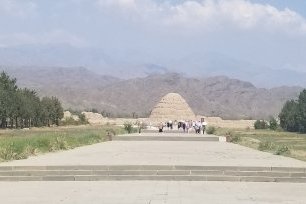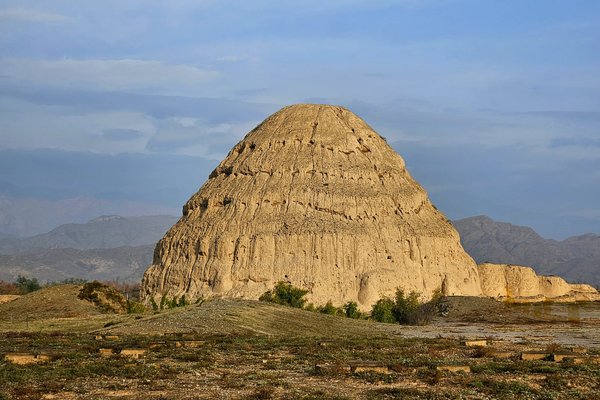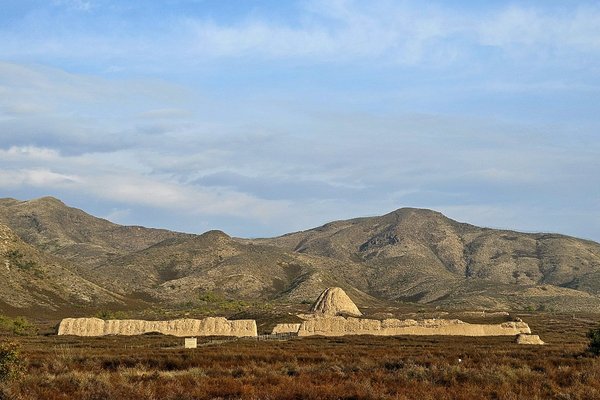China
Xixia Imperial Tombs
The Xixia Imperial Tombs comprise a necropolis that includes the royal mausoleums of the emperors of the Western Xia Dynasty (1038-1227).
The tombs are the best-preserved historic cultural heritage representing the Tangut civilization, which was of nomadic descent and was responsible for cultural and commercial exchange in north-west China. Each of the imperial tombs has its unique characteristics. Most are octagonal, and some are circular. Furthermore, there are also many small individual tombs for subordinates.
Community Perspective: The tombs are massive and unique in shape, but there isn’t much to see; most of the items have been moved to the on-site museum.
Site Info
Official Information
- Full Name
- Xixia Imperial Tombs (ID: 1736)
- Country
- China
- Status
-
Inscribed 2025
Site history
History of Xixia Imperial Tombs
- 2025: Inscribed
- Meets criterion 2 and 3
- 2013: Added to Tentative List
- Added to tentative list
- Type
- Cultural
- Criteria
- ii
- iii
Links
- UNESCO
- whc.unesco.org
All Links
UNESCO.org
- whc.unesco.org — whc.unesco.org
Community Information
- Community Category
- Secular structure: Burial
Travel Information
Recent Connections
-
Perfect Inscriptions
2025
-
Silk Roads
"The position of the territory of the X…
-
Tombs
includes 271 subordinate tombs (AB ev)
Connections of Xixia Imperial Tombs
- History
-
-
Mongol Invasions
"In 1227, after numerous offensives, the Mongol army of Genghis Khan put an end to the Xixia Empire and destroyed its capital" (AB ev)
-
Silk Roads
"The position of the territory of the Xixia Empire on the Silk Road increased its wealth and allowed it to develop a policy of trade" (AB ev)
-
- Architecture
-
-
Octagons
"The Xixia stupas are massive buildings, usually octagonal in shape or, more rarely, circular." (AB ev) -
Earth Architecture
"Rammed earth, mud bricks and wood are the main materials used to construct the buildings of the funerary complex." (AB ev) -
Geomancy
"Criterion (ii) (...) is justified by the State Party on the grounds that the Xixia Imperial Tombs, due to their spatial organisation and their architectural, technical and stylistic arrangements, through the expression of a spirituality that combines Buddhism with Feng Shui traditions, provide evidence of a multicultural civilisation based on agro-pastoralism and trade (...)." – "The archaeological remains preserved attest to an original civilisation whose population was mainly composed of the Tanguts, an initially nomadic people, who, when they settled, developed a specific funerary culture of which Buddhism was an essential part, combined with Confucian practices, the geomantic principles of Feng Shui and surviving ancestral animist beliefs." (AB ev) -
Glazed tiles
"The Xixia stupas (...) are conical in shape, with five to seven storeys narrowing towards the top, and are punctuated by glazed tile roofs, supported by wooden brackets." (AB ev)
-
- Damaged
-
-
Destroyed during invasion
"In 1227, after numerous offensives, the Mongol army of Genghis Khan put an end to the Xixia Empire and destroyed its capital" (AB ev)
-
- World Heritage Process
-
-
Perfect Inscriptions
2025
-
- Religion and Belief
-
-
Stupa
"The Xixia stupas are massive buildings, usually octagonal in shape or, more rarely, circular. They have a solid internal structure made of rammed earth. They are conical in shape, with five to seven storeys narrowing towards the top, and are punctuated by glazed tile roofs, supported by wooden brackets." (AB ev)
-
- Human Activity
-
-
Writing systems
"(...) the Tanguts developed a civilisation based on the Chinese imperial model, of which Buddhism was an essential part. This is evidenced by very large, diverse architectural sites, as well as a wealth of objects excavated at the property, including fragments of stelae in Tangut script." (AB ev) -
Protective engineering works against flooding
"Comprising nine imperial mausoleums, 271 subordinate tombs, a northern architectural complex and thirty-two flood control works, this necropolis is a unique testimony to the Xixia Dynasty and its imperial lineage (...)." – "An ensemble of flood control works was created alongside the development of the funerary site. Twenty-six dikes and six drainage ditches, with a cumulative length of more than three kilometres and more than two kilometres respectively, were identified on the site." (AB ev)
-
- Constructions
-
-
Mausolea
"containing the remains of nine imperial mausoleums, said to be those of seven Xixia emperors" (AB ev)
-
Necropolises
"The Xixia Imperial Tombs are a necropolis of the Xixia Dynasty, (...) formed from the 11th to 13th centuries." (AB ev) -
Tombs
includes 271 subordinate tombs (AB ev)
-
- Timeline
-
-
Built in the 11th century
"The Xixia Imperial Tombs are a necropolis of the Xixia Dynasty, (...) formed from the 11th to 13th centuries." (AB ev)
-
News
No news.
Community Reviews
Show full reviews
Once a mighty force, the Tangut Empire... wait, who?! If you have heard of the Tangut Empire before you must have either been to the tombs before, be a Chinese History major or maaaaybe just picked up tiny bit of info on it in some museum or wikipedia. Well, so the Tanguts had an empire from 1038 to 1227 in northwestern China (this according to Wikipedia). The empire got totally destroyed by the Mongols and traces of it vanished until the 20th century when the imperial tombs where discovered near Yinchuan, Ningxia, which was the empire's former capital.
The tombs are a quick 30min cab ride from the city center (rail station). Upon arrival you are greeted by a massive visitor center/museum that makes any city's town hall look small. The museum isn't actually that big and only has a few halls. The ceilings are just so massive and want to seem imposing, perhaps because the tombs stand tall too (or maybe the cinema takes up so much space, I didn't go inside)? Yinchuan is super hot in summer so staying in the cool museum is very welcoming. You also get a great introduction to the Western Xia (Xī Xià), see many artifacts, get you ready to see the real thing later. Well, let's be fair, the imperial tombs are a not the greatest to see from the outside.
After having seen everything in the museum you can trek through an underpass to the opposite side …
Keep reading 0 comments

